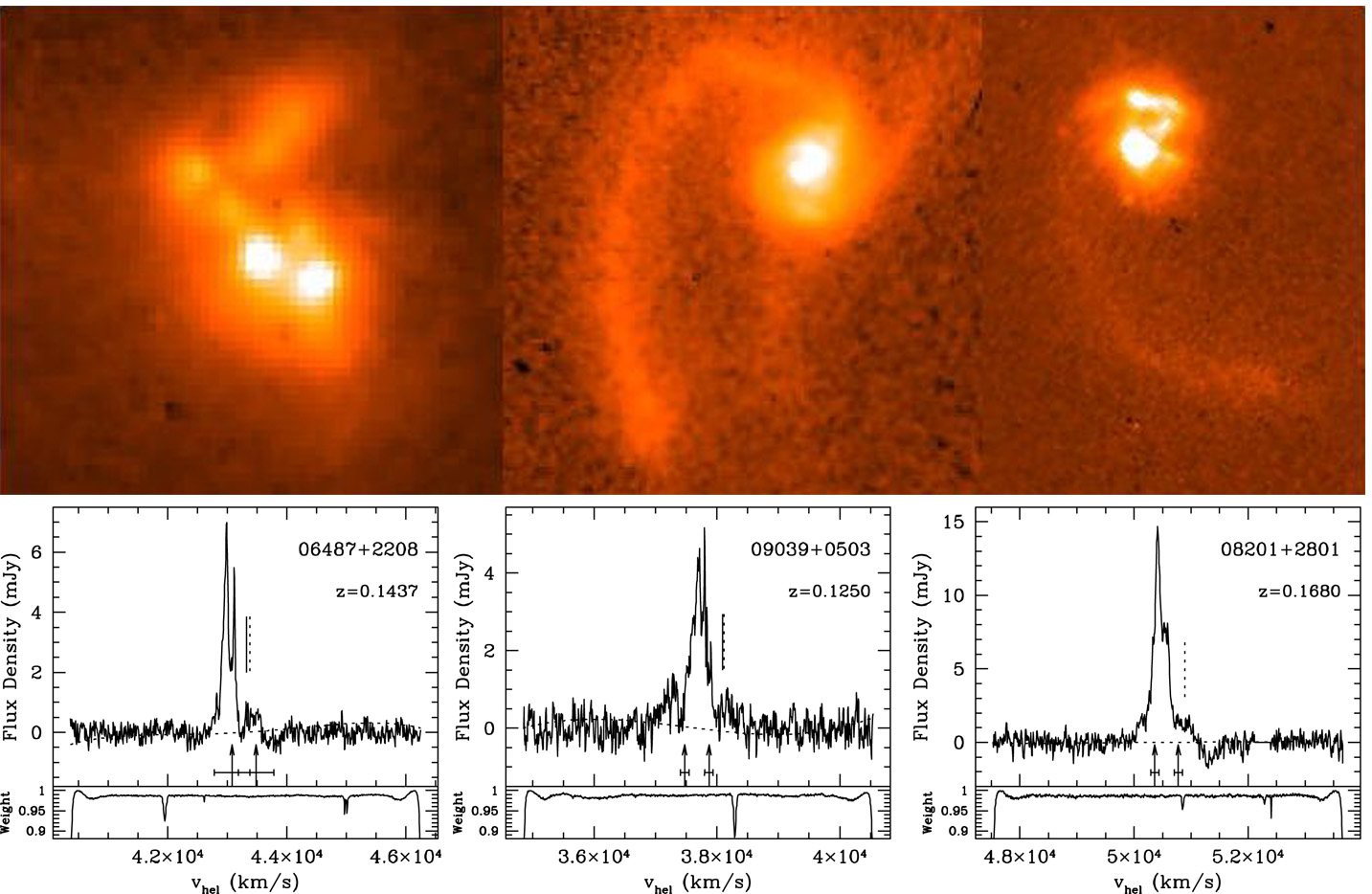
For his Ph.D. thesis, Jeremy Darling used the recently-upgraded Arecibo telescope to investigate the merger rate in ultraluminous galaxies using the 18 cm (1.6 GHz) transitions of the OH radical as the "merger marker".
| OH "megamasers" arise in interacting/merging galaxy systems. When galaxies merge, the gas clouds close to their nuclei are shocked and heated by the collision, and the emission from certain molecules especially OH is strongly amplified. Since this stimulated emission is like the more familiar laser but occurs in the microwave region of the electromagnetic spectrum, it is called a "maser". When galaxies collide, the emission is millions of times stronger than in normal galaxies, hence the term "megamaser". Such objects are also typically (ultra) luminous in the far-infrared. |

|